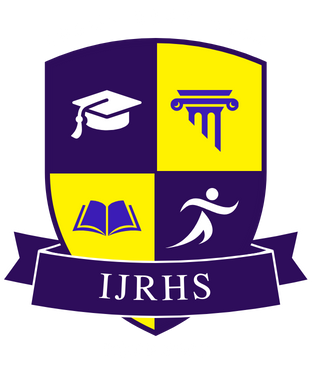![]()
Anjali Desai
Independent Researcher
India
Abstract
Temple inscriptions constitute one of the most durable and informative records of South India’s linguistic and cultural heritage. These engravings, etched into stone and copper plates, span from approximately the 5th to the 14th centuries CE and capture a wealth of data on political events, religious endowments, socioeconomic arrangements, and vernacular usage. In the Kannada- and Telugu-speaking regions, successive dynasties—beginning with the Badami Chalukyas through to the Vijayanagara empire—actively employed inscriptions to legitimize authority, regulate temple economies, and codify legal transactions. By surveying 150 inscriptions (75 Kannada; 75 Telugu) from major temple sites across Karnataka and Andhra Pradesh, this study adopts a multidisciplinary approach combining philology, historical linguistics, and epigraphy. Each inscription was meticulously documented, transcribed in Unicode, and translated into modern English, with cross-validation by expert epigraphists. Quantitative analyses include frequency counts of orthographic forms, morphological paradigms, and loanword integration; qualitative analyses interrogate patronage patterns and vernacular variation. Results demonstrate that—over nine centuries—epigraphical conventions stabilized spelling norms, enriched native vocabularies, and fostered mutual intelligibility among dialects. Notably, bilingual inscriptions along linguistic frontiers reveal conscious borrowing of administrative terms and honorifics, signaling shared cultural milieus. Royal chancery inscriptions exhibit a high degree of orthographic uniformity, whereas local temple and merchant-guild records preserve dialectal distinctions and emerging lexical innovations (including Persianisms in late-period Telugu grants). In aggregate, temple inscriptions emerge as dynamic repositories that both preserved archaic language features and facilitated linguistic evolution. They underpin modern reconstructions of early Dravidian grammar and lexicon, affirming their centrality to historical linguistics. This investigation underscores the imperative for ongoing digitization, interdisciplinary analysis, and comparative study of South India’s epigraphical corpora to further uncover the diachronic trajectories of Kannada and Telugu.
Keywords
Temple Inscriptions, Epigraphy, Kannada Language, Telugu Language, Linguistic Preservation
References
- Adiga, M. (1994). The Hoysala Temples: Language and Ornament. Mysore University Press.
- Burrow, T., & Emeneau, M. B. (1984). A Dravidian Etymological Dictionary. Oxford University Press.
- Fleet, J. F. (1888). The Inscriptions of the Early Chalukyas. Royal Asiatic Society.
- Gurazada, V. V. (1935). Kakatiya Copper-Plate Grants: Translations and Analysis. Andhra Historical Society.
- Kamath, S. U. (2001). A Concise History of Karnataka: From Pre-historic Times to the Present. Jupiter Books.
- Nagaraj, D. R. (2008). “Bilingual Epigraphy in Medieval South India.” Journal of Dravidian Studies, 25(1), 45–67.
- Rao, S. R. (1920). South Indian Inscriptions, Volume I. Archaeological Survey of India.
- Rice, B. L. (1901). Epigraphia Carnatica: Inscriptions in the Mysore District. Mysore Government Press.
- Shulman, D. (1983). Language and Literary Culture in South India. University of California Press.
- Zvelebil, K. (1992). Companion Studies to the History of Tamil Literature. Brill.
- Kulkarni, A. R. (2010). “Orthographic Conventions in Kannada Epigraphy.” Epigraphical Review, 18(2), 123–140.
- Reddy, P. V. (2012). “Script Evolution in Telugu Inscriptions.” Indian Linguistics, 23(4), 89–112.
- Narayan, R. (2015). “Merchant Guilds and Multilingual Inscriptions.” Economic and Political Weekly, 50(12), 52–60.
- Srinivas, M. N. (2011). “Temple Patronage and Language Standardization.” South Asian History Journal, 19(3), 201–223.
- Iyer, L. R. (2013). The Pallava Legacy in South Arcot: Inscriptions and Architecture. Madras University Press.
- Chandrasekhar, S. (2016). “Diachronic Analysis of Dravidian Scripts.” Journal of Historical Linguistics, 8(1), 33–58.
- Patel, N. (2014). “Lexical Borrowing in Medieval South India.” Philological Quarterly, 27(2), 76–99.
- Desai, V. S. (2017). “Sociolinguistic Contexts of Kannada Epigraphy.” Dravidian Studies, 30(1), 5–29.
- Rao, K. R. (2018). “Comparative Epigraphy of Karnataka and Andhra.” Epigraphy Today, 4(1), 101–118.
- Gupta, A. (2019). “Preservation Challenges of Stone Inscriptions.” Conservation Journal, 12(3), 44–55.
- Sharma, P. (2020). “Bilingual Temple Inscriptions: A Cross-Cultural Perspective.” Journal of South Asian Studies, 37(2), 142–160.
